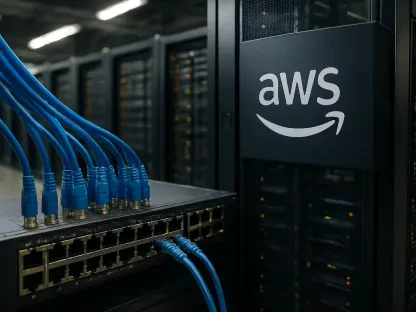Setting the Stage for AI Transformation in Enterprise Markets
In an era where artificial intelligence drives competitive advantage, enterprises across industries face mounting pressure to integrate AI solutions at scale while navigating the intricate challenges of infrastructure and cost management. A staggering statistic underscores this urgency: industry reports suggest that over 70% of global businesses aim to adopt AI-driven processes by 2027, yet many struggle with the operational complexities of model training. Google Cloud’s recent enhancement to its Vertex AI Training service steps into this critical juncture, offering a robust platform designed to streamline large-scale AI development. This market analysis explores the implications of this upgrade, delving into current trends, competitive dynamics, and future projections for enterprise AI adoption. The focus lies on how this development reshapes the cloud computing landscape and empowers businesses to prioritize innovation over logistical hurdles.
Decoding Market Trends and Competitive Dynamics
Vertex AI’s Strategic Positioning in the Cloud AI Arena
Google Cloud’s upgraded Vertex AI Training service arrives at a pivotal moment in the cloud computing market, where hyperscale providers like AWS and Microsoft Azure dominate alongside niche GPU specialists such as CoreWeave. The introduction of managed Slurm environments—a high-performance computing workload manager—marks a significant leap, automating cluster provisioning and job scheduling for multi-thousand-GPU setups. This capability, combined with tools for hyperparameter tuning and data optimization, positions Google Cloud as a formidable contender by reducing deployment timelines from weeks to days. For enterprises in sectors like retail or finance, this translates to faster rollout of tailored AI models, such as fraud detection systems or inventory predictors, enhancing their agility in dynamic markets.
Flexibility as a Market Differentiator
Another key trend shaping the enterprise AI market is the growing demand for customizable solutions that balance complexity with practicality. Vertex AI’s upgrade addresses this by supporting a spectrum of model development options, from lightweight fine-tuning techniques like LoRA to comprehensive training of custom or open-source models using frameworks such as NVIDIA NeMo. This flexibility caters to diverse industry needs, allowing a healthcare firm to fine-tune diagnostic models efficiently while a tech giant might opt for full-scale training for proprietary innovations. However, market disparities persist—smaller enterprises or those in regions with limited data infrastructure may find the high costs and expertise requirements of extensive training prohibitive, highlighting a gap in accessibility that could influence adoption rates.
Addressing Infrastructure Bottlenecks and Cost Concerns
A persistent challenge in the enterprise AI market is the disproportionate time spent on infrastructure management rather than core innovation. Vertex AI’s Dynamic Workload Scheduler emerges as a critical feature, optimizing costs and ensuring resilience during compute-intensive tasks. This resonates strongly with industries like manufacturing, where predictive maintenance models require substantial computational resources. Despite these advancements, market analysts note that not all businesses possess the governance maturity or data readiness to leverage full-scale training, often finding better return on investment through simpler fine-tuning methods. This dichotomy suggests a segmented market where advanced enterprises gain significant benefits, while others must adopt more pragmatic approaches to stay competitive.
Future Projections for Enterprise AI and Cloud Strategies
Rising Demand for High-Performance Computing Resources
Looking toward the horizon, the enhanced Vertex AI platform is poised to drive a surge in demand for GPUs and high-performance computing resources across enterprise sectors. As businesses increasingly seek to customize AI models to their unique datasets—think logistics firms optimizing supply chain algorithms or media companies personalizing content recommendations—the need for scalable infrastructure will intensify. Projections indicate that from 2025 to 2027, the market for HPC solutions could see accelerated growth, potentially prompting cloud providers to innovate with competitive pricing models. Google Cloud’s focus on automation and integration may set a benchmark, pushing rivals to prioritize efficiency alongside raw computational power.
Hybrid Deployments and Regulatory Influences
Another emerging trend is the shift toward hybrid and flexible cloud deployments as enterprises aim to balance performance with budget constraints. Vertex AI’s upgrade supports this by enabling cost-optimization tools that align with varying workload demands, a feature likely to appeal to industries with fluctuating AI needs, such as seasonal retail or event-driven entertainment. Simultaneously, regulatory scrutiny around data governance and compliance is expected to shape market evolution, particularly in sectors like healthcare and finance where data sensitivity is paramount. Cloud providers, including Google, may need to further embed compliance features into platforms to meet stringent standards, influencing how enterprises strategize their AI investments over the coming years.
Competitive Innovation and Market Expansion
The broader market implication of Vertex AI’s enhancement lies in its potential to catalyze innovation among cloud providers. As Google Cloud strengthens its foothold with integrated, enterprise-friendly solutions, competitors are likely to respond with enhanced offerings, possibly focusing on niche areas like edge computing or industry-specific AI tools. This competitive pressure could expand the overall market, making AI infrastructure more accessible to mid-tier enterprises and emerging economies. Additionally, the emphasis on simplifying training workflows might encourage cross-industry collaborations, where tech providers partner with domain experts to develop specialized models, further diversifying the application of AI technologies in untapped markets.
Reflecting on Market Insights and Strategic Pathways
Looking back, this analysis of Google Cloud’s Vertex AI Training upgrade reveals its profound impact on the enterprise AI market, highlighting both immediate benefits and long-term challenges. The platform’s ability to streamline large-scale model training through managed Slurm environments and cost-optimization tools positions Google as a leader in addressing infrastructure pain points. However, the varied readiness of enterprises to adopt such advanced solutions underscores a fragmented market landscape. Moving forward, businesses are encouraged to assess their data and governance capabilities before committing to resource-intensive projects, potentially starting with fine-tuning to achieve quicker wins. Strategic partnerships with cloud providers to leverage hybrid models offer a balanced approach, while staying attuned to regulatory shifts ensures compliance in sensitive industries. These actionable steps provide a roadmap for enterprises to harness AI’s transformative power without overextending resources, paving the way for sustainable innovation.









